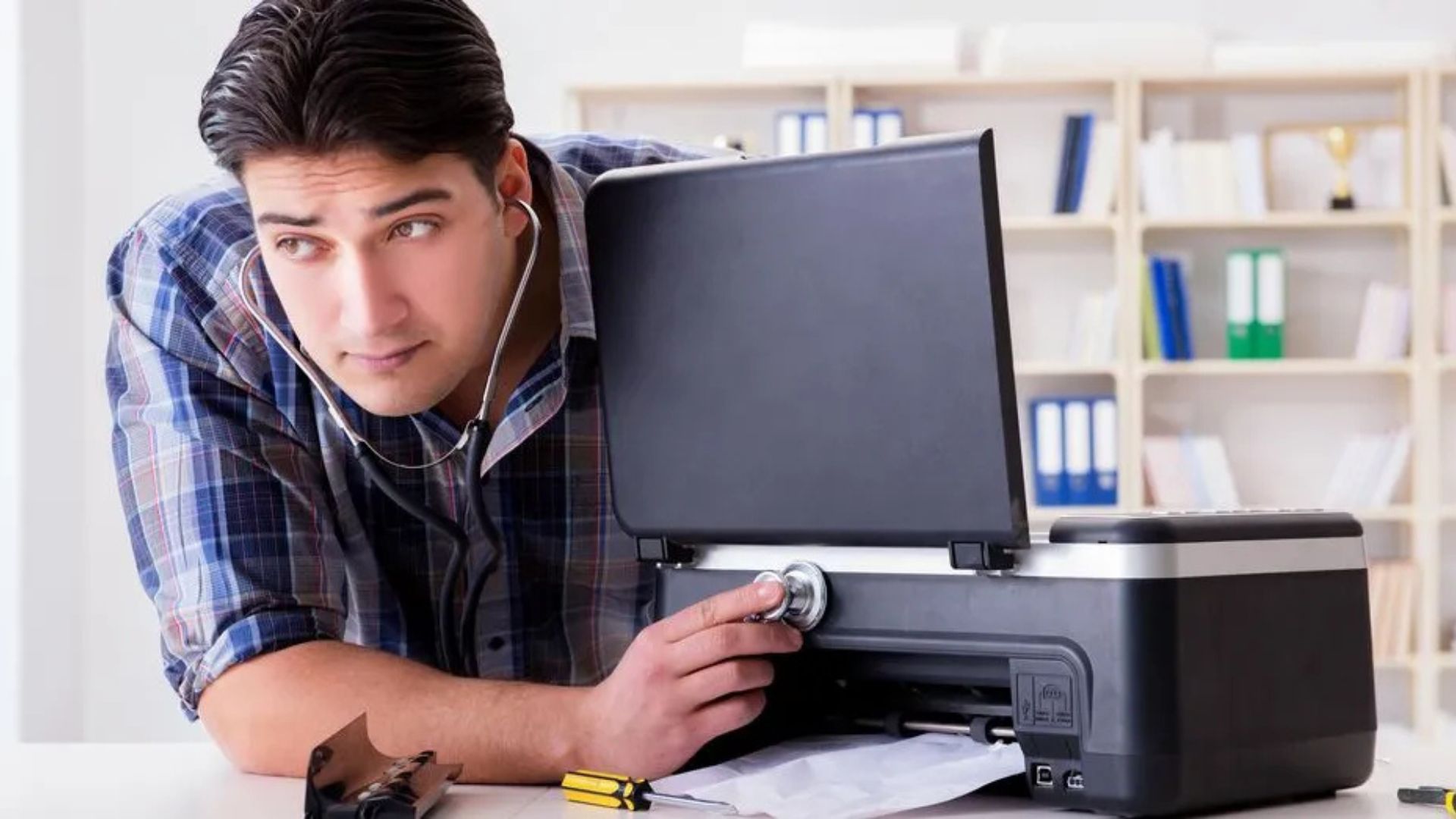How to Fix Common Printer Problems
Printers are essential tools in both home and office environments, but like any technology, they can sometimes run into issues. From paper jams to poor print quality or connectivity problems, these problems can disrupt your workflow and cause frustration. Fortunately, many printer issues can be solved quickly with basic troubleshooting steps.
In this guide, we’ll walk you through some of the most common printer problems and provide solutions to help you get your printer back up and running smoothly.

Printer Not Responding
Common Cause:
A printer not responding can be caused by several factors, such as a poor connection, a stalled print job, or software issues.
How to Fix:
- Check the Power and Connections: Ensure that the printer is plugged in and turned on. If you’re using a wired printer, check the USB or Ethernet connection. For wireless printers, verify that the printer is connected to the correct Wi-Fi network.
- Restart the Printer and Computer: Sometimes, a simple restart can resolve connectivity issues.
- Check for Print Jobs in the Queue: Cancel any stuck print jobs. Go to the printer queue (on your computer) and clear any pending jobs that might be causing the printer to stall.
- Update Printer Drivers: Outdated drivers can cause the printer to stop responding. Visit the manufacturer’s website to download the latest drivers for your printer.
Paper Jam
Common Cause:
Paper jams are one of the most frequent printer problems. They can occur due to improper paper loading, dust, or foreign objects inside the printer.
How to Fix:
- Turn Off the Printer: Always turn off the printer before attempting to remove the jammed paper to avoid damaging any internal components.
- Open the Printer and Remove the Paper: Gently pull out any jammed paper from the input tray or the printer’s output tray. Be careful not to rip the paper, as pieces left behind can cause further jams.
- Check the Paper Path: Look for any small pieces of paper or debris inside the printer. Clean the rollers with a soft, lint-free cloth to prevent future jams.
- Use the Right Paper: Ensure that you are using the correct paper size and type for your printer. Avoid overloading the paper tray, as this can cause jams.
Poor Print Quality
Common Cause:
Poor print quality is often caused by low ink or toner, clogged printheads, or incorrect printer settings.
How to Fix:
- Check Ink or Toner Levels: Ensure that the ink or toner cartridges are not low. Replace them if necessary.
- Clean the Printheads: If you’re using an inkjet printer, clogged printheads can cause streaks or faded prints. Use the printer’s built-in cleaning function to clear any blockages.
- Adjust Print Settings: Make sure that you are using the correct print quality settings. If you’re printing photos or high-resolution documents, choose the “Best” or “High Quality” setting in your printer settings.
- Use High-Quality Paper: Low-quality or wrong paper type can also affect print quality. Make sure you are using paper designed for your printer type (e.g., photo paper for photos).
- Align the Printheads: Some printers allow you to align the printheads for improved print quality. This can be done through the printer’s control panel or software.
Wi-Fi Connection Issues (Wireless Printers)
Common Cause:
Wireless printers can sometimes lose connection to the network due to interference, incorrect network settings, or router issues.
How to Fix:
- Check the Wi-Fi Connection: Ensure your printer is connected to the same network as your computer or mobile device. If it’s not, reconnect the printer to the correct network via the printer’s settings menu.
- Restart the Router and Printer: Sometimes, restarting both the router and the printer can resolve connectivity issues.
- Move Closer to the Router: If your printer is too far from the router, signal strength may be weak. Try moving the printer closer to the router or use a Wi-Fi extender.
- Update Printer and Router Firmware: Ensure both your printer and router have the latest firmware updates, which can improve compatibility and fix connectivity bugs.
- Reconfigure Network Settings: If the printer is still having trouble, reset the network settings on your printer and reconnect it to the Wi-Fi network.
Conclusion
Printer problems can be frustrating, but most issues are easy to fix with a little troubleshooting. By following the steps outlined above, you can resolve common problems like paper jams, poor print quality, slow printing, and connection issues without needing to call a technician. Regular maintenance, such as cleaning the printheads, checking ink levels, and updating drivers, will help prevent many of these problems from occurring in the first place.



